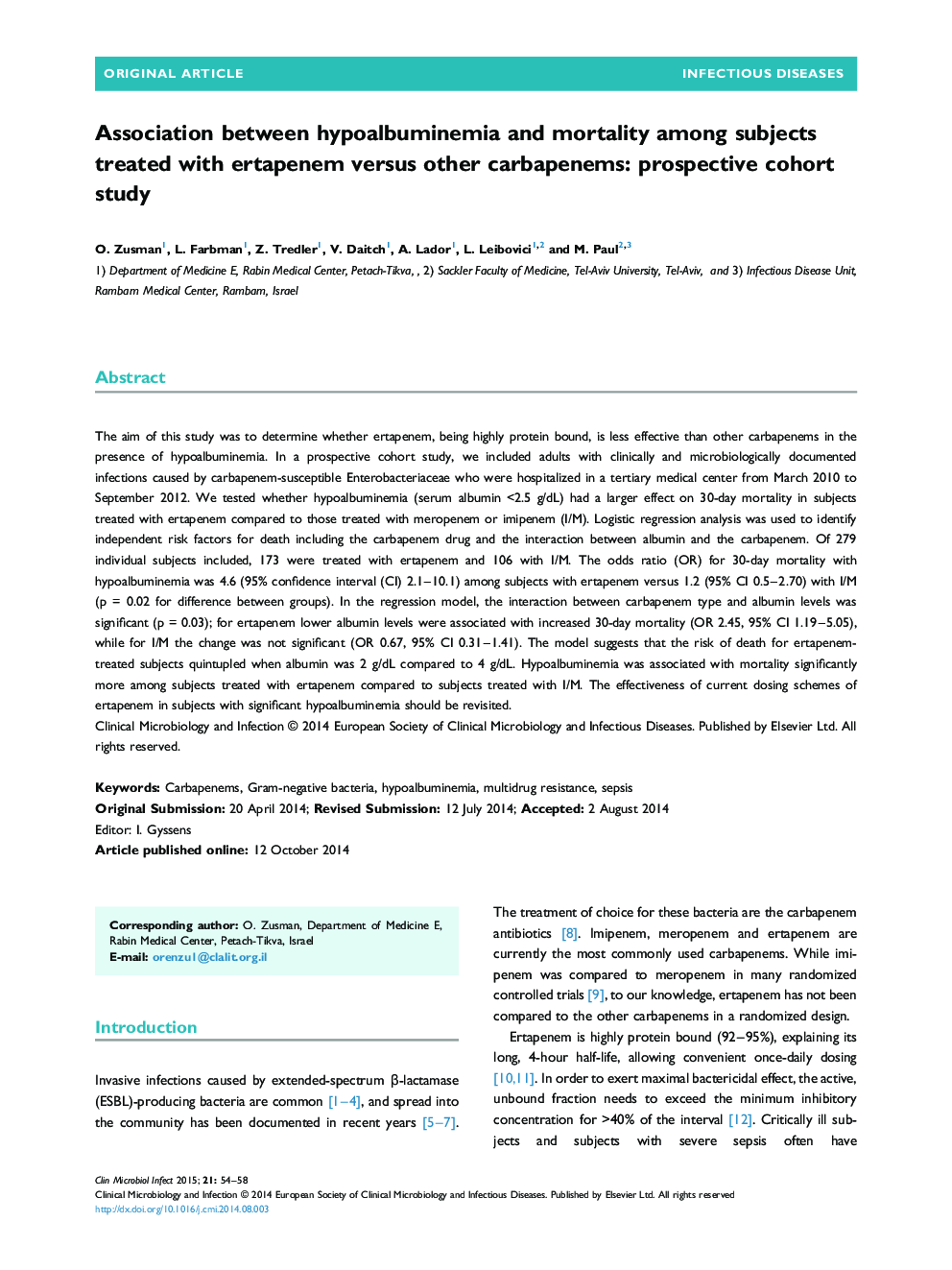| Article ID | Journal | Published Year | Pages | File Type |
|---|---|---|---|---|
| 3396444 | Clinical Microbiology and Infection | 2015 | 5 Pages |
The aim of this study was to determine whether ertapenem, being highly protein bound, is less effective than other carbapenems in the presence of hypoalbuminemia. In a prospective cohort study, we included adults with clinically and microbiologically documented infections caused by carbapenem-susceptible Enterobacteriaceae who were hospitalized in a tertiary medical center from March 2010 to September 2012. We tested whether hypoalbuminemia (serum albumin <2.5 g/dL) had a larger effect on 30-day mortality in subjects treated with ertapenem compared to those treated with meropenem or imipenem (I/M). Logistic regression analysis was used to identify independent risk factors for death including the carbapenem drug and the interaction between albumin and the carbapenem. Of 279 individual subjects included, 173 were treated with ertapenem and 106 with I/M. The odds ratio (OR) for 30-day mortality with hypoalbuminemia was 4.6 (95% confidence interval (CI) 2.1–10.1) among subjects with ertapenem versus 1.2 (95% CI 0.5–2.70) with I/M (p = 0.02 for difference between groups). In the regression model, the interaction between carbapenem type and albumin levels was significant (p = 0.03); for ertapenem lower albumin levels were associated with increased 30-day mortality (OR 2.45, 95% CI 1.19–5.05), while for I/M the change was not significant (OR 0.67, 95% CI 0.31–1.41). The model suggests that the risk of death for ertapenem-treated subjects quintupled when albumin was 2 g/dL compared to 4 g/dL. Hypoalbuminemia was associated with mortality significantly more among subjects treated with ertapenem compared to subjects treated with I/M. The effectiveness of current dosing schemes of ertapenem in subjects with significant hypoalbuminemia should be revisited.
